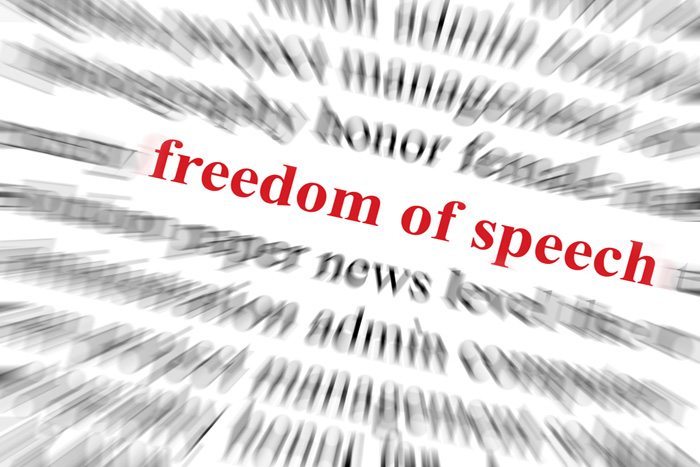Eight Places Where Free Speech Boundaries Are Stricter Than at Many Abortion Clinics
Reading the Supreme Court’s opinion in the Massachusetts buffer zone case, you might get the idea that free speech in the form of protests and handing out literature about social and political issues is practiced without restriction in the United States. But that is not the case.

Read more of our coverage on the McCullen v. Coakley case here.
Last week, the Supreme Court unanimously ruled against Massachusetts’ abortion clinic buffer zone law, which prohibited anti-choice protesters from congregating within 35 feet of clinics.
As Rewire reported last week, the Court didn’t rule against buffer zones entirely, but said the Massachusetts law burdened free speech to an unnecessary degree. “Petitioners wish to converse with their fellow citizens about an important subject on the public streets and sidewalks—sites that have hosted discussions about the issues of the day throughout history,” the Court wrote.
Reading the Court’s opinion, you might get the idea that free speech in the form of protests and handing out literature about social and political issues is practiced without restriction in the United States. But that is not the case. To illustrate that point, Rewire has created a list of eight places where you can only exercise free speech in certain places, at certain times, and under certain conditions.
1. The Supreme Court
In June of last year, the Supreme Court issued a regulation barring demonstrations on the Court’s plaza. The Court says the regulation is necessary to “maintain suitable order and decorum within the Supreme Court building and grounds.”
2. College Campuses
College campuses, particularly the University of California at Berkeley, were notoriously the hub of free speech protests during the ’60s and ’70s. But many colleges still restrict student speech. According to the Foundation for Individual Rights in Education, a sixth of the nation’s top 400 colleges have designated and sectioned-off “free speech zones” in which students can protest and pass out literature. At McNeese State University in Louisiana, for example, students are allowed to distribute literature in two designated zones, up to three times a year, for no more than four hours per event. As we’ve reported before, Louisiana has some of the worst health and reproductive outcomes in the country, and 25 percent of people of color don’t have health insurance.
3. Churches
In March, the Mormon church told an organization of Mormon women interested in gender equality, called Ordain Women, that they would not be allowed to protest on church property. The church, which excludes women from most positions of authority within Mormonism, in a statement said that women interested in protesting use the free speech zones adjacent to the building. The religion has a history of sexism, and women’s roles are “always mediated and under the direction of male priesthood leaders,” according to Ordain Women.
4. Airports
In San Francisco at least, religious and social groups such as the Hare Krishnas are banned from passing out literature except at two “free speech booths” inside two of the airport terminals. A permit must be received through the airport before using the booth. The San Francisco and Los Angeles airports also prohibit individuals using the booth from certain kinds of panhandling, and in 2010 the supreme court of California ruled in favor of this prohibition.
5. Political Party Conventions
Many political conventions strictly enforce “free speech zones” for protesters, many of which are out of sight from the actual event. The 2004 Democratic National Convention, for example, forced protesters to congregate in an enclosure described by the Washington Post as:
Wedged between a parking lot for buses and a bunch of trailers, and set beneath the blue-green steel supports of a condemned stretch of the T, Boston’s mass-transit line. The area’s perimeter is marked by a sawtooth pattern of Jersey barriers, and it’s caged top to bottom with cyclone fencing and barbed wire. A black plastic tarp keeps officially credentialed types in the FleetCenter compound from seeing inside the pen.
6. Anti-War Protests
In 2001, a protester was arrested for holding up a sign reading “No War for Oil, Don’t Invade Iraq” during President Bush’s visit to Columbia, South Carolina. After a long legal battle, the protester was fined $500 for failing to stay in the designated free speech zone, instead demonstrating in the public airport where the event was held. The zone created for Bush’s appearance was half a mile away from the event.
7. National Parks
Many national parks have set aside zones where protesters can exercise their First Amendment rights. A Canadian blogger visiting a national park in Tennessee noticed a sign reading, “This area has been set aside for individuals or groups exercising their constitutional First Amendment Rights.” The National Park Service website explains that “the National Park Service establishes guidelines for setting the time, place and manner (number of participants, use of facilities and type of equipment) for the [free speech] events to occur.”
8. Super Bowls
The passage of the “Federal Restricted Buildings and Grounds Improvement” act in 2012 makes it a federal offense, punishable by up to ten years in prison, to protest anywhere defined as an event needing Secret Service protection. According to Slate, “every Super Bowl since 9/11” has been defined as such an event.
